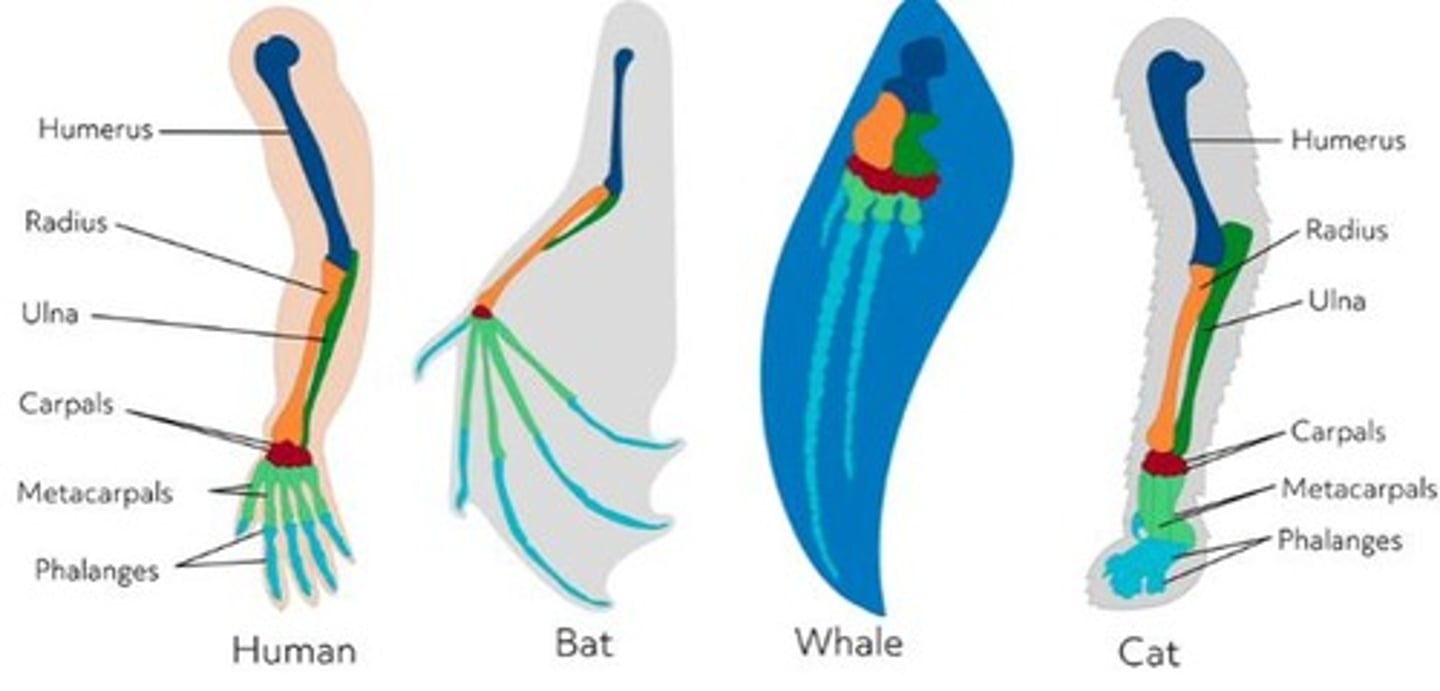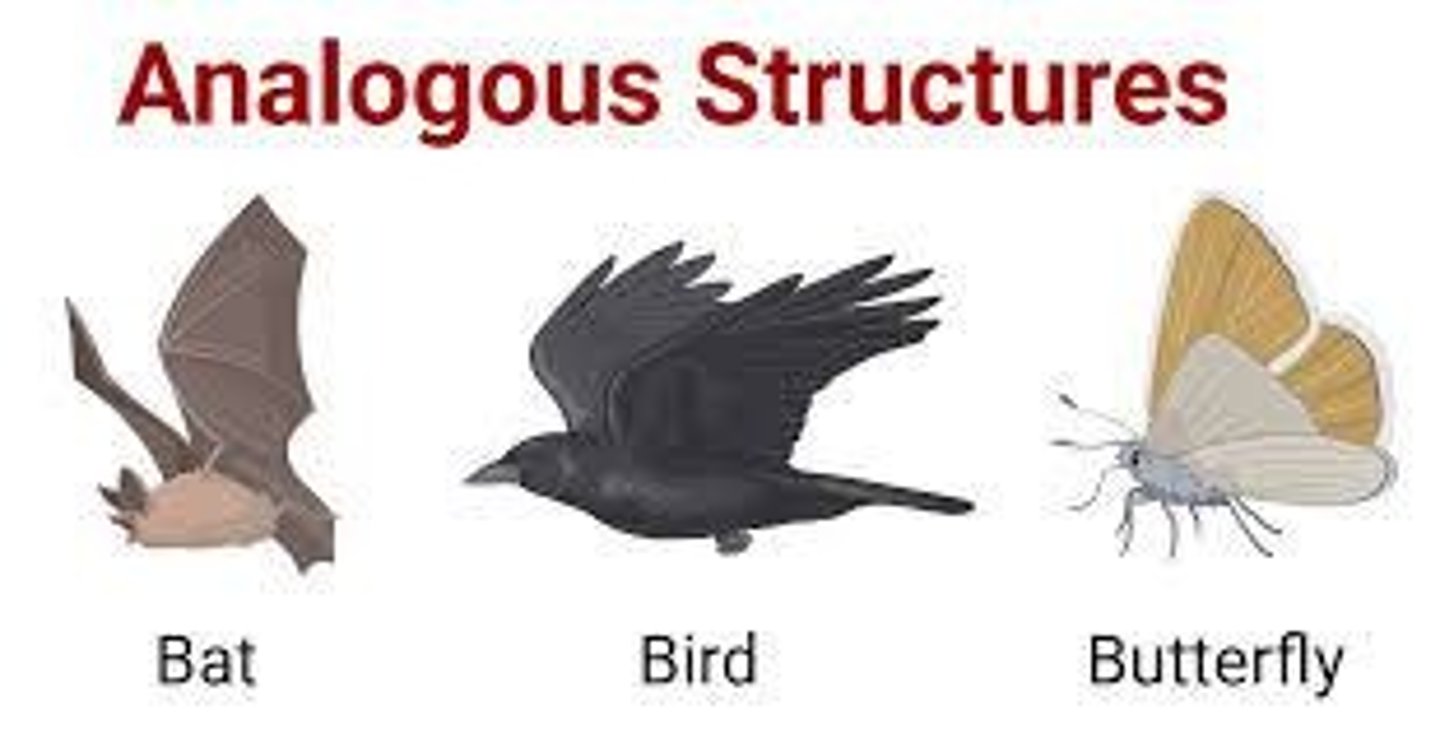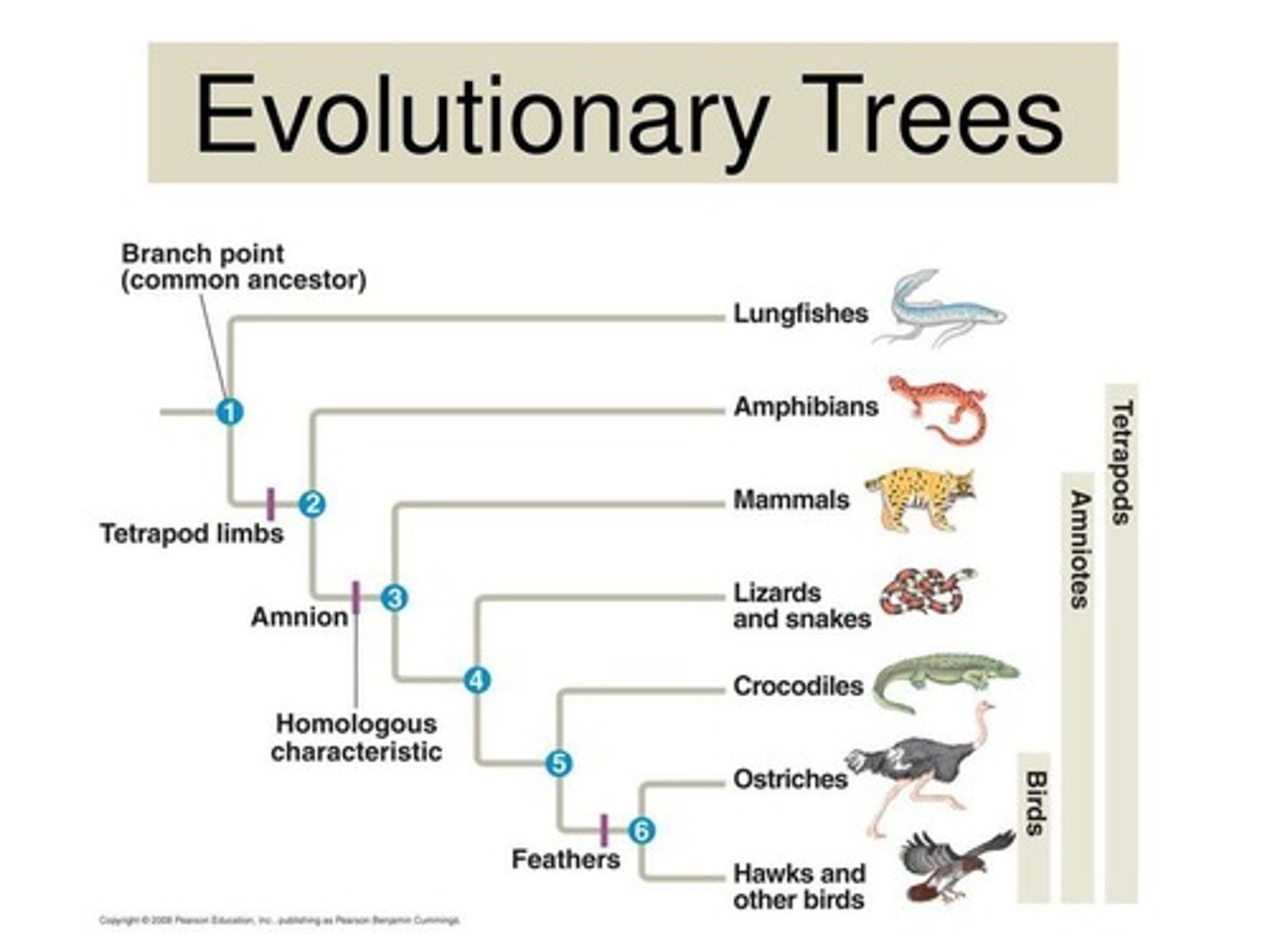Evolutionary Biology: Key Concepts and Theories
1/46
There's no tags or description
Looks like no tags are added yet.
Name | Mastery | Learn | Test | Matching | Spaced |
|---|
No study sessions yet.
47 Terms
Charles Darwin
Considered the father of evolutionary biology.
HMS Beagle
The ship on which Darwin took a 5-year voyage in the 1840s, circling the globe and exploring distant continents.
Evolution
The idea that living species are descendants of ancestral species that were different from present-day ones.
Alfred Russel Wallace
An English naturalist who confirmed Darwin's conclusions that species change over time.
Charles Lyell
A geologist who argued that gradual changes over time shape the Earth's surface.
Thomas Malthus
An economist who explained how famine, disease, and conflict occur when human populations become larger than their environments can support.
On the Origin of Species
The book written by Darwin.
Fossils
Imprints or remains of organisms that lived in the past.
Strata
Layers of sedimentary rock.
Paleontologists
Scientists who study fossils.
Fossil record
The chronicle of evolution over millions of years of geologic time engraved in the order in which fossils appear in the rock strata.
Whales and evolution
Whales possess pelvic bones, leading to the hypothesis that they evolved from four-limbed land mammals.
Homology
Similarity resulting from common ancestry.

Homologous structures
Similar structures found in organisms with common ancestry that could have different functions, such as the forearms of mammals.
Analogous structures
Similar adaptations in unrelated species, such as the adaptation of wings in insects, birds, and bats.

Embryonic similarities
Show that organisms share a common ancestor; all vertebrate embryos are similar in appearance and possess the same structures.
Vestigial structures
Remnants of features that served important functions in the organism's ancestors, such as the human tailbone.
Evolutionary tree
A graphical representation of the relatedness of organisms, showing common ancestors and adaptations.

Artificial selection
Humans select which animals are bred to have offspring with useful traits, such as dog breeding for certain tasks.
Natural selection
Occurs when individuals of a species have traits that increase their survival, leading to those traits becoming more prevalent in the population.
Peppered moths
An example used to explain natural selection, where white peppered moths blended in on white birch trees and were less likely to be eaten by predators.
white peppered moths
Able to blend in on white birch trees and were less likely to be eaten by predators.
black peppered moths
More likely to survive and produce offspring as nearby factories caused the trees to turn black with soot.
population
A group of organisms of the same species in the same area.
gene pool
All the genes of all the members of a population.
microevolution
Changes in the allele frequencies of a population over a short period of time (generation-to-generation).
macroevolution
Changes in species over geologic time (millions of years), including speciation when a new species is created.
Hardy-Weinberg equation
p2+2pq+q2=1 and p+q=1.
Hardy-Weinberg equilibrium requirements
A population is in Hardy-Weinberg equilibrium if the frequencies of alleles remain constant from generation to generation.
large population
One of the requirements for Hardy-Weinberg equilibrium.
random mating
One of the requirements for Hardy-Weinberg equilibrium.
no gene flow
One of the requirements for Hardy-Weinberg equilibrium, meaning no exchange of genes between populations.
no natural selection
One of the requirements for Hardy-Weinberg equilibrium.
no new mutations
One of the requirements for Hardy-Weinberg equilibrium.
natural selection
One of the three main causes of evolution.
genetic drift
Changes that happen in small populations due to chance.
gene flow
Sharing of genes between two populations.
bottleneck effect
A natural or man-made catastrophe reduces the number of individuals, resulting in decreased genetic diversity in the surviving population.
founder effect
Certain recessive alleles can occur at a higher frequency when a small group of individuals colonize an area.
relative fitness
The contribution an individual makes to the gene pool of the next generation relative to the contributions of other individuals.
stabilizing selection
Favors intermediate (middle) phenotypes, such as human birth weights.
directional selection
Shifts the overall makeup of the population toward one extreme and away from another, such as coloration in peppered moths.
disruptive selection
Environmental conditions vary in a way that favors phenotypes at both ends of the range.
intrasexual selection
Occurs between members of the same sex, such as contests between males for the right to mate with a harem of females.
intersexual selection
Occurs between both sexes, such as females selecting males with the brightest colored feathers.
sexual dimorphism
Differences in physical characteristics between two sexes of a species, such as peacock and peahen.
heterozygote advantage
Heterozygous individuals have greater reproductive success, such as sickle-cell carriers having a mild form of the disease but greater resistance to malaria.